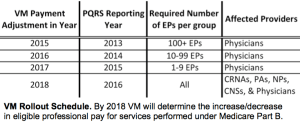
The Sedasys computer-assisted personalized sedation (CAPS) system is an anesthesiology machine that aims to automate anesthesia delivery(2). If successful, this machine would greatly reduce the need for anesthesiologists. This four-piece system includes a Bedside Monitoring Unit (BMU) that stays with the patient from before the procedure through post-procedure recovery, a Procedure Room Unit (PRU) that contains the propofol infusion pump controller, the display monitors, and disposable devices for single-patient use (3). With a push of a button, the Sedasys machine sends a measured dose of sedation drug to a patient via<a href=”https://xenonhealth.com/patients/”> intravenous IV infusion</a> (2, 3). The machine monitors the patient’s breathing, blood oxygen levels, and heart rate. The machine’s computerized voice instructs the patient to squeeze a controller, aiming to keep the patient in a period of moderate sedation. The machine uses an algorithm for propofol dosing that attempts to maximize patient comfort and safety (7). If any problem is detected, the machine is programmed to slow or cut off the drug’s infusion (2). Medical professionals such as nurses are still needed for monitoring, but this machine hopes to replace the job of an anesthesiologist in certain procedures such as routine endoscopies.
Critics have indicated several disadvantages associated with the machine. The Sedasys machine was only approved to administer sedation for healthy patients undergoing colonoscopy and esophagogastroduodenoscopy (EGD) procedures, thus many patients and procedures requiring anesthesia will not be able to safely utilize Sedasys (3, 7). In an emergency situation, a physician anesthesiologist would be able to intervene and save the patient whereas a Sedasys machine would not have the capability to do so. “While the Sedasys System can safely administer sedation for healthy patients undergoing the procedures mentioned, emergencies can and do occur, even during the simplest procedures and with the healthiest patients,” Jeffrey Apfelbaum, co-chair of the American Society of Anesthesiologists (ASA) states (6). Additionally, those opposed to the use of Sedasys are wary of whether medical professionals will remain strictly compliant with the limitations imposed by the Food and Drug Administration (FDA). Mistakes in complying with FDA guidelines such as patient selection, fulfillment and maintenance requirements, and immediate availability of an anesthesia professional could have fatal consequences.
<a href=”https://xenonhealth.com/anesthesia-professionals/”>Anesthesiologists</a> lobbied against the Sedasys machine for years, arguing that machines could not replicate the skillset of an anesthesiologist (2). They claimed that the Sedasys machine would be especially dangerous in emergency situations because any error in anesthesia delivery being potentially fatal to the patient. After initially being denied twice, the Sedasys device was approved by the FDA under the condition that it was limited to simple screenings and an anesthesiology doctor or nurse was on-call in case of emergency (2, 5). However, in March 2016, Johnson & Johnson reported that it will discontinue its Sedasys computerized anesthesia system (5). The machine was pulled from the market after poor sales (4). According to news reports, only a handful of providers adopted the device (5). In hopes of more successful products, the company is now focusing on developing technology that assists doctors rather than replacing them. While the Sedasys machine seemed like a promising way to cut costs and reduce human errors, further study has indicated that no machine can replace physician anesthesiologists.
<img class=”size-medium wp-image-3867 aligncenter” src=”https://xenonhealth.com/wp-content/uploads/2016/07/XH-73-300×200.jpg” alt=”XH 73″ width=”300″ height=”200″ />
Sources:
1. https://www.washingtonpost.com/news/the-switch/wp/2016/03/28/its-game-over-for-the-robot-intended-to-replace-anesthesiologists/
2. https://www.washingtonpost.com/business/economy/new-machine-could-one-day-replace-anesthesiologists/2015/05/11/92e8a42c-f424-11e4-b2f3-af5479e6bbdd_story.html
3.http://www.fda.gov/MedicalDevices/ProductsandMedicalProcedures/DeviceApprovalsandClearances/Recently-ApprovedDevices/ucm353950.htm
4. https://www.technologyreview.com/s/601141/automated-anesthesiologist-suffers-a-painful-defeat/
5. http://www.massdevice.com/johnson-johnson-bails-sedasys-automated-anesthesia-device/
6. http://www.newsweek.com/plug-pulled-robot-doctor-after-humans-complain-442036
7. http://www.medscape.com/viewarticle/851173





